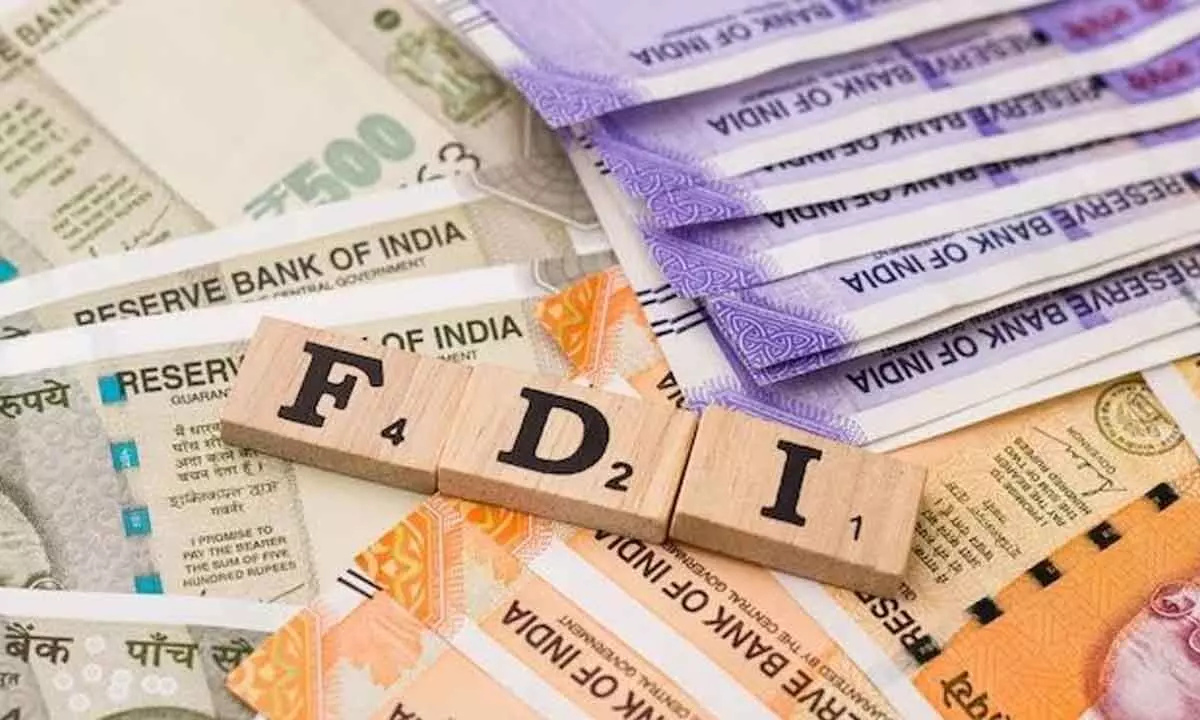Only steadier FDI inflows can spur country’s growth
Despite a 47% drop in FDI inflows, India was among the top five destinations for greenfield projects
image for illustrative purpose

Projections for inflation and borrowing costs in major markets indicate a stabilization of financing conditions for international investment deals: UNCTAD
Foreign Direct Investment (FDI) is a major driver of economic growth and an important source of non-debt finance for the country’s economic development. It has been the endeavour of the Union government to put in place an enabling and investor friendly FDI policy.
The intent all this while has been to make the FDI policy more investor-friendly and remove all the policy bottlenecks that have been hindering investment inflows into the country. The steps taken in this direction have borne fruit, as is evident from the ever-increasing volumes of FDI inflows that are coming in.
Last year, some major developing economies in Asia saw significant declines in FDI inflows but remained attractive destinations for greenfield projects – when a parent company starts a venture in a foreign country by constructing new operational facilities from the ground up. For instance, China reported a rare 6% decrease in FDI inflows but saw 8% growth in new greenfield project announcements.
Similarly, India recorded a 47% drop in FDI inflows but remained among the top five global destinations for greenfield projects.
FDI flows to members of the Association of Southeast Asian Nations (ASEAN), normally an engine of FDI growth, declined by 16%. Yet the group remained attractive for manufacturing investments with a remarkable 37% increase in greenfield project announcements in nations like Viet Nam, Thailand, Indonesia, Malaysia, the Philippines and Cambodia.
In West Asia, FDI remained stable at 2% buoyed by sustained investments in the United Arab Emirates, which saw greenfield announcements rise by 28%, trailing only the United States, the world’s largest FDI recipient. Greenfield numbers also surged 63% in Saudi Arabia.
Africa's FDI flows remained nearly unchanged in 2023 at an estimated $48 billion, marking a slight 1% decrease compared to the previous year.
The region saw an increase in greenfield project announcements, particularly in Morocco, Kenya and Nigeria. However, a significant one third reduction in project finance deals – higher than the global average – raises concerns for the future of infrastructure financing in the continent.
The investment landscape in Latin America saw contrasting trends in 2023. Its largest economy, Brazil, recorded a 22% decrease in FDI inflows. While the country’s greenfield project numbers remained stable, international project finance deals plummeted by 40% compared to 2022.
Meanwhile, Mexico, the region’s second-largest economy, saw a 21% increase in both FDI and greenfield project announcements, reinforcing its position as a top global recipient.
Cautious optimism amid uncertainties:
Looking ahead, a UNCTAD report says that 2024 could see a modest increase in FDI flows.
“Projections for inflation and borrowing costs in major markets indicate a stabilization of financing conditions for international investment deals,” it says.
India signed three free trade agreements with Mauritius, the UAE and Australia between 2021 and 2022 hoping to become a global leader in trade. Despite these achievements, India has also seen a decline in FCI inflows, falling from $84.8 billion in 2021-2022 to $71.3 billion in 2022-2023. To overcome this, India should leverage its free trade agreements to secure higher inflows, diversify its import sources and increase its participation in global value chains.
These FTAs have considerable significance for the Indian economy as the country aspires to become a leader in the global trade ecosystem by achieving an export target of $2 trillion by 2030.
Despite these efforts, its participation in global value chains remains limited, with a share of global merchandise exports of less than two per cent and is moreover concentrated in select industries like automobiles, pharmaceuticals and mobile phones. Increased participation in global value chains can lead to economic growth, higher productivity and job creation and improved living standards.
The strategy must be in recognizing that FTAs are crucial tools for integrating into global value chains and attracting investments. To achieve this, India’s FTAs must be redesigned to achieve deeper economic integration and broaden the scope of trade liberalisation. This will require methodically selecting partner economies that align with our strategic goals and economic priorities.
Despite a challenging global backdrop, the Indian economy is exhibiting sustained momentum and resilience. The domestic financial system remains sound and is bolstered by the improving health of financial institutions.
Preemptive regulatory measures taken recently are expected to moderate the build-up of stress emanating from rising unsecured loans and rapid growth in consumer credit. Global spillovers, rising interconnectedness in the domestic financial sector, and the increasing role of NBFCs in providing financial services remain contingent risks.
However, banking capital, regulatory prudence, and strong balance sheets should ensure that the domestic banking system is well-positioned to withstand shocks and support the productive needs of the economy.

